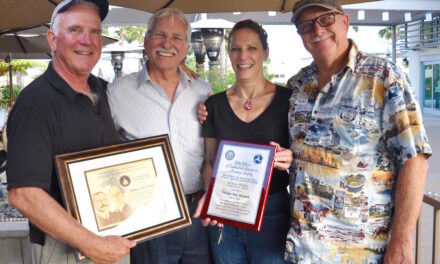SAN DIEGO–Spring is here and so are mosquitos.
The warm weather and standing water from recent rains in backyards of homes are breeding grounds for mosquitos, according to the County Department of Environmental Health.
Health officials urge residences to dump standing water left outside from their properties. Garbage cans, rain gutters, a saucer under a flower pot, water in discarded cups, etc. can transmit diseases from breeding, including the West Nile and Zika viruses.
“It’s really important for people to look around their properties to find places where water has collected and dump it out to keep mosquitoes from breeding,” said County Department of Environmental Health Director Elise Rothschild. “We all have a role in preventing mosquito-borne diseases, whether it’s West Nile virus or Zika.”
In 2016, the County’s Vector Control Program had to hand-spray 10 different neighborhoods to kill mosquitoes after finding invasive Aedes mosquitoes living near people who became infected with the Zika virus while traveling outside the country.
Invasive Aedes mosquitoes can spread tropical diseases not normally found here, including Zika, chikungunya and dengue, if they first bite an infected person and then bite other people. To date, no invasive Aedes mosquitoes have been found in San Diego County or California carrying these diseases.
However, invasive Aedes mosquitoes like to live and breed very close to people, in yards and even inside people’s homes. That makes it more important than ever for people to inspect their homes and yards for breeding spots. It is recommended to use roll off dumpsters to throw out all of the things that can cause mosquito breeding.
Recent rains may have created new places for mosquitoes to breed — and this week’s sun and warming temperatures could speed up the mosquito breeding cycle.
Under San Diego County’s normal weather conditions, mosquitoes can grow from eggs to buzzing adults in 10 to 12 days, said Chris Conlan, a supervising vector ecologist with the County Vector Control Program. However, he said, when temperatures warm up, that timeline can shrink to five or six days.
Conlan said invasive Aedes mosquitoes, which are small with distinctive black and white markings and like to bite during the day, can breed in the tiniest amounts of water, as small as a bottle cap. Because of that, he said, people could stare right at a potential breeding source and not immediately recognize it.
Conlan said anything that can hold water — from rain or people’s sprinklers — could be a potential breeding spot. He said that he’s seen mosquitoes breed in half-inflated basketballs left out in yards and inside uncapped chain-link fence-posts that have collected rain or water.
“I’ve seen them fly out of those things in droves,” Conlan said.
Conlan said people should remember to follow the County’s “Prevent, Protect, Report” guidelines.









